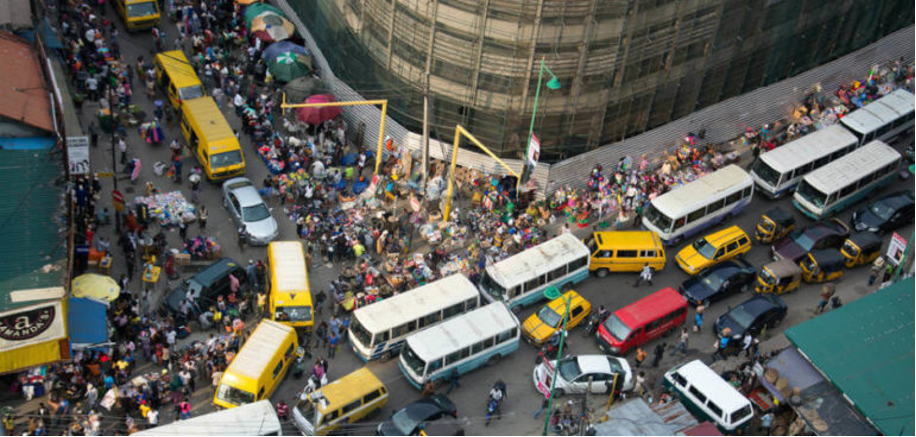In the third quarter of 2022, a former Permanent Secretary in the Lagos State Ministry of Transport, Taiwo Salaam, stated that if the traffic congestion in the densely populated Nigeria’s commercial capital city of Lagos should continue unaddressed till 2030, the city is estimated to lose as much as 21 billion dollars every month.
In another report, the average commuter in Lagos spends over 3 hours in traffic every day. It makes Lagos one of the most congested cities in the world.
Indeed, the effects of daily traffic congestion can’t be precisely quantified!
Traffic situations vary across different states globally; however, the peculiarity and “uniqueness” of Lagos traffic is worth every attention.
An average Lagos commuter makes every effort to listen to traffic updates or consult Google Maps before setting out daily just to figure out the best route with “lesser traffic”.
A recurring question after struggling through several hours of traffic congestion is “what was the cause of the traffic?!”
Some of the activities I’ve observed are road constructions, flood, events, breakdowns, breaking traffic rules, etc.
In some instances, the traffic congestions have been attributed to the Traffic Light Control Systems, usually called “Traffic Lights”, which one would have expected to help ease traffic situations on different roads across the state.
Every time I find myself at the traffic lights, I take a few seconds to observe the timing of the lights and the coordination. About a week ago, I was at a “cross junction” and vehicles from all sides of the roads were on “red” for about 10 seconds, everyone looked confused but I screamed “WRONG MODELING!”
Mathematics is greatly involved in the design and operation of traffic lights. In the process of designing a traffic light control system that suits a particular area, traffic engineers use Mathematical Models to predict traffic flow and determine optimal timing for the traffic lights. Some factors are put into consideration in the process of modeling such as the distance between intersections, the number of vehicles on the road, and the speed of vehicles.
In recent years, advanced technologies such as cameras, sensors, and machine learning algorithms have been used to improve traffic signal operations. These technologies enable traffic engineers to collect real-time data on traffic conditions and adjust signal timings accordingly – this approach is called the adaptive traffic control. Machine learning algorithms can also be used to predict future traffic patterns and adjust signal timings proactively. By using mathematical models and optimization algorithms, traffic engineers can improve traffic flow, reduce congestion, and enhance safety on roads.
What is Mathematical Modeling?
Mathematical modeling is the process of creating a mathematical representation of some phenomenon in order to gain a better understanding of that phenomenon. Also, mathematical modeling is the use of mathematics to describe real-world phenomena, investigate important questions about the observed world, explain real-world phenomena, test ideas and make predictions about the real-world.
One of the most common mathematical models used in traffic engineering is the “queuing theory”, which is used to predict the behavior of traffic queues at intersections. This theory is used to estimate the length of queues that can form at intersections, and to determine the optimal timing of traffic signals to minimize the duration of these queues.
Another concept used is “optimization”. This involves finding the best combination of signal timings to maximize traffic flow and minimize delays. Optimization algorithms take into account a range of factors, including traffic volume, vehicle speeds, and the number of lanes at an intersection. These algorithms are used to determine the optimal green, yellow, and red signal timings for each intersection.
Stochastic Model Platoon Formation in Traffic Flow, a model for estimating probability distributions of potential outcomes by allowing for random variation in one or more of the inputs over time. It is appropriate for determining the delay to pedestrians because the cars arrive at regular intervals; therefore, the stochastic model refers to a realistic model.
One very obvious thing to note is the fact that each location/intersection has its own uniqueness hence the need to use the appropriate model.

One very obvious thing to note is the fact that each location/intersection has its own uniqueness hence the need to use the appropriate model.
While all necessary variables are put into consideration before any mathematical model is adopted for any traffic control system, I think behavioral patterns of commuters have to be part of the analysis of signal and traffic changes, let’s call it “Psycho-mathematical Modeling”.
Overall, mathematics plays a critical role in the design and operation of traffic signals. When next you’re at any intersection, observe the lights and the mathematical works that went into it.













Unusual School @Segun Ilori , your love for mathematics is palpable.
Ain’t nothing limiting your exploits.
Cheers